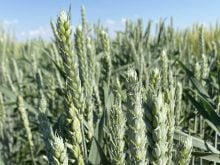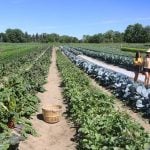Money makes the world go round, according to the song lyric, and that seems to be true for prairie grain farmers.
The three items of most concern for farmers in the Canadian Wheat Board’s 2009 annual producer survey all revolve around money.
Topping the list are farm input and production costs, identified as the major concern by 52 percent of respondents.
That’s down from the previous year, when inputs and costs were mentioned by 66 percent.
That’s followed on the list by grain prices and profits, mentioned by 36 percent, and then weather conditions, identified by 24 percent.
Read Also

Maritime biofuel regulations could increase crop prices
The International Maritime Organization is proposing a new regulation that would provide an enormous boost to global biofuel demand, which would have a tremendous impact on demand for crops like corn, soybeans and canola.
Asked if certain issues would be a problem or major problem in 2009, 80 percent identified input costs, 54 percent transportation, 50 percent the price of wheat and 48 percent the price of other grains.
CWB chair Larry Hill said it’s not surprising that bread and butter issues topped the list of farmer concerns.
“We’ve seen for a long time that producers are more concerned about their incomes and livelihoods and bottom lines than a bunch of smaller issues and political bickering,” he said.
And he added that should send a strong message to those in positions to make decisions about agricultural issues to keep their eyes on that ball.
“This is where the focus must lie for policy makers, whether those of us around the CWB board table or government legislators at all levels,” said Hill.
The survey makes it clear farmers on both sides of the debate are not very interested in hearing or talking about issues directly related to the CWB and its single desk marketing system.
Just two percent said government interference with the CWB was a big issue, and another two percent said their dislike of the CWB was an issue.
The telephone survey of 1,300 CWB permit book holders was conducted between April 9 and May 1 and carries a prairie-wide margin of error of plus or minus 2.68 percent 19 times out of 20.
Fifty-seven of the participants were aged 35 to 64, 93 percent were male and there was a roughly equal three-way split between farmers owning less than 640 acres, between 640 and 2,500 and more than 2,500.
While 60 percent of respondents prairie-wide said they’re optimistic about the future of agriculture, 65 percent expect this year to be tougher than last year.
Farmers in Saskatchewan are the most optimistic, with 64 saying things will get better, followed by Manitoba at 56 percent and Alberta at 52 percent.
While the survey showed CWB issues were well down the list of concerns, the board always uses the annual survey to ask farmers what kind of a job the marketing agency is doing.
Here are some of the responses.
- 71 percent said they strongly or somewhat support the CWB and 70 percent said that the views of the CWB are close to their own.
- 83 percent believe the board of directors runs the agency, up from 74 percent last year.
- 72 percent believe the agency is controlled by farmers through the elected directors and 61 percent said they feel like an owner of the CWB.
- For the first time, fewer than half (49 percent) believe the government has more say over major decisions.
- 71 percent rated the CWB as excellent or fair in providing accountability to farmers.
- Asked to choose between the single desk and the open market, farmers opted 63 percent for the single desk and 31 percent for the open market for wheat . For barley, 42 percent chose single desk and 46 percent the open market.
- 43 percent said they had a more favourable view of the CWB than two years ago, while 12 had a less favourable view.
Hill said he considers those results to be positive for the CWB.
“It’s a good report card to take home,” he said. “You can never be perfect, but you always strive to do the best you can, and I think that’s what we’re doing.”
He said the board always makes use of the information in the annual producer survey to assess its performance and respond to farmers’ wishes.
“A lot of the programs we’ve introduced have been as the result of these surveys and other feedback we get from farmers,” he said.














